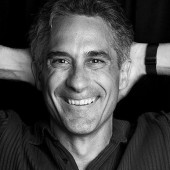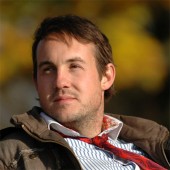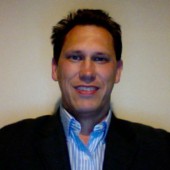Thank you to Curiosity Show host Prof. Rob Morrison for taking the time to answer our questions about the launch of the show online.
Many Australian’s hold fond memories of mornings on the couch, watching The Curiosity Show… and after a 23 year hiatus, they have returned to thrill a new generation of eager Australians!
The Curiosity Show has hit the web, with all the classic segments – including favourites like Make-and-Do, Nature and Puzzles – now available on youtube. You can also connect with the show on their website, facebook and twitter.
Prof. Rob Morrison, Curiosity show host, said that originally the show was designed to deal with science and technology, without overtly teaching it. He says, “we did this by using things like natural history segments, lots of making and doing, and things like art and music segments.
“Making and Doing meant things like mousetrap racing cars, battery-powered hovercraft, pill-bottle torches, and mousetrap paddlewheelers, where children had to deal with power sources, gearing, and power-weight ratios without their ever being called that. We also showed the objects that we made working so they knew what to expect if they got their versions right.
“We used things like art and music for similar reasons. For example, making your own PVC panpipes or PVC recorder involved science and technology in working out the length of pipe to get the right pitch, and exploring the proportions of paintings, seashells, and flower centres brought in golden proportions and Fibonacci numbers without overtly teaching those as maths.
“We did lots of tricks and puzzles, too. You can deal with a great deal of maths when you dress it up as magic, and children who would run a mile from a maths segment are quite happy to learn how to do a trick that might baffle a parent or two.”
Prof Morrison, and fellow Curiosity Show host Deane Hutton, have enlisted the help of digital media agency Enabled Solutions to aid in the process of uploading the segments to the internet. By doing this, the show can benefit from not only their expertise in cross-platform digital media, but also their links to a number of educational services.
The wide variety of segments and projects available mean that there are a number of opportunities for teachers from all different areas to expose their children to hands-on learning experiences – while giving children an appreciation of the role of science in all aspects of the world around them.
“There are lots of art, language, maths segments which touch on science and technology (e.g. origin of “knots” and “log” which come from sailing ships; origin of sayings like “red herring” and riddles like “which came first, chicken or egg?” These all have science in their explanations.
“We were aiming at upper primary levels, where crossover in the curriculum is very much to be encouraged so that the artificial divisions imposed by curriculum areas are not introduced too soon for children to see how science connects to everything.
“Some art segments use maths (Golden mean) while others, such as simple lithography, work because of the ability of water to repel oil, and that allows limestone printing. This joint mix of science within other areas is important. Other segments, such as those in the “Make and Do” playlist, offer things to build or do that are more overtly science or technology, but good fun to play with as well.
“We also had a series, and there are some of these segments in there, called “CURIO” in which we show some ancient or obscure bit of technology, ask kids to guess what it is and then explain it. It is a window into technology of the past (old mining devices, ship’s candle-holder, miner’s spider etc).
“We strongly believed, and still do, that children obtain a huge amount of incidental learning by making and doing things. It is worrying to see so much of childhood now involves not hands and fingers making things that work, but two thumbs to control a virtual, X-Box world.”




